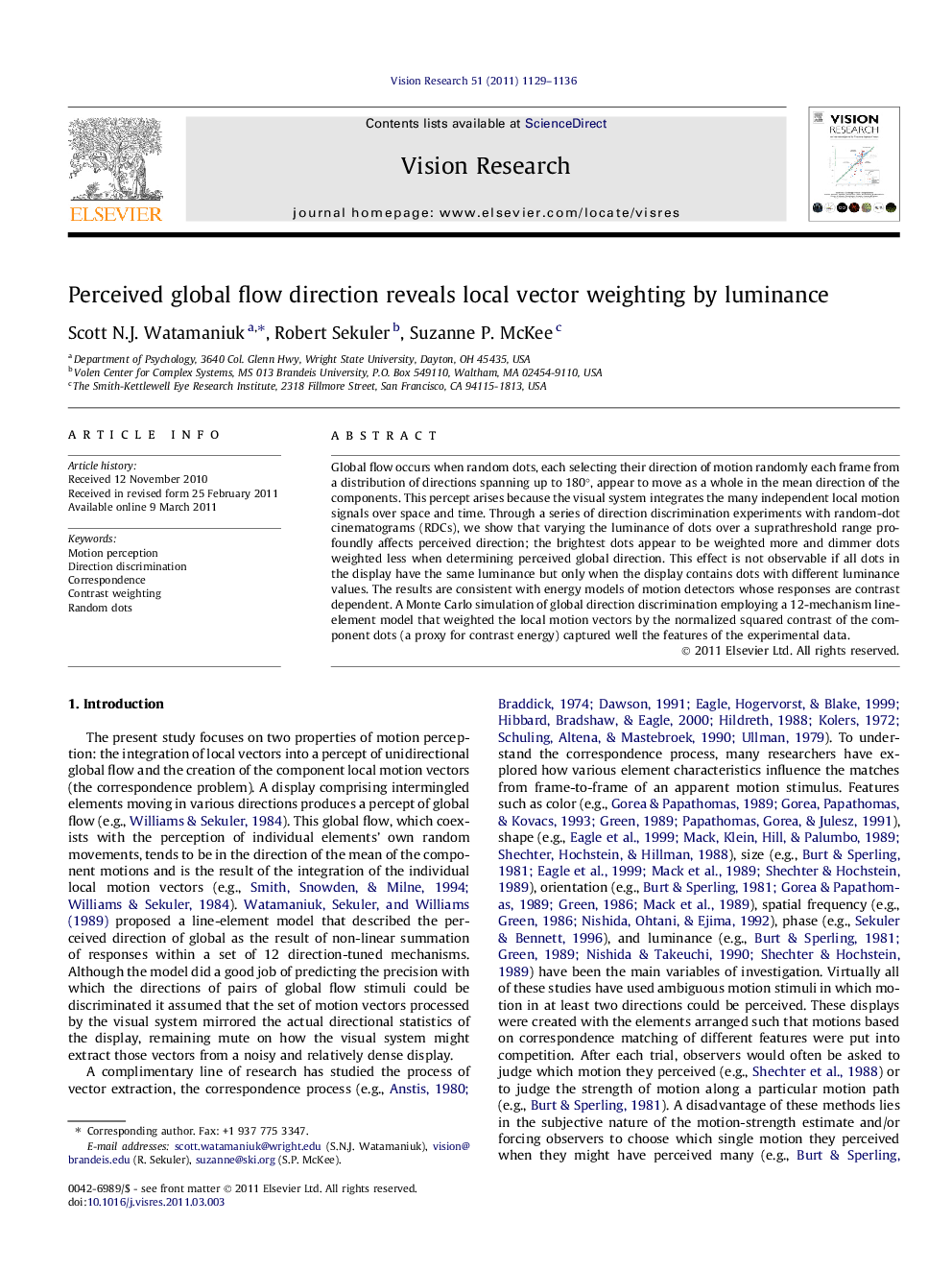| کد مقاله | کد نشریه | سال انتشار | مقاله انگلیسی | نسخه تمام متن |
|---|---|---|---|---|
| 4034283 | 1263443 | 2011 | 8 صفحه PDF | دانلود رایگان |

Global flow occurs when random dots, each selecting their direction of motion randomly each frame from a distribution of directions spanning up to 180°, appear to move as a whole in the mean direction of the components. This percept arises because the visual system integrates the many independent local motion signals over space and time. Through a series of direction discrimination experiments with random-dot cinematograms (RDCs), we show that varying the luminance of dots over a suprathreshold range profoundly affects perceived direction; the brightest dots appear to be weighted more and dimmer dots weighted less when determining perceived global direction. This effect is not observable if all dots in the display have the same luminance but only when the display contains dots with different luminance values. The results are consistent with energy models of motion detectors whose responses are contrast dependent. A Monte Carlo simulation of global direction discrimination employing a 12-mechanism line-element model that weighted the local motion vectors by the normalized squared contrast of the component dots (a proxy for contrast energy) captured well the features of the experimental data.
A random-dot cinematogram in which individual dots are assigned in each frame a luminance level based upon their direction of movement can dramatically alter the perceived direction of global flow, consistent with weighting each local direction vector by the normalized component dot contrasts.Figure optionsDownload high-quality image (158 K)Download as PowerPoint slideHighlights
► Global flow results from integration of local motion vectors.
► Models of cortical motion detectors are driven by contrast.
► Dynamic stimuli with several luminance contrasts can dramatically affect global flow direction.
► Local motion vectors of higher contrast carry more weight in determining global flow direction.
► A line-element model with local vector contrast weighting accounts well for human data.
Journal: Vision Research - Volume 51, Issue 10, 25 May 2011, Pages 1129–1136